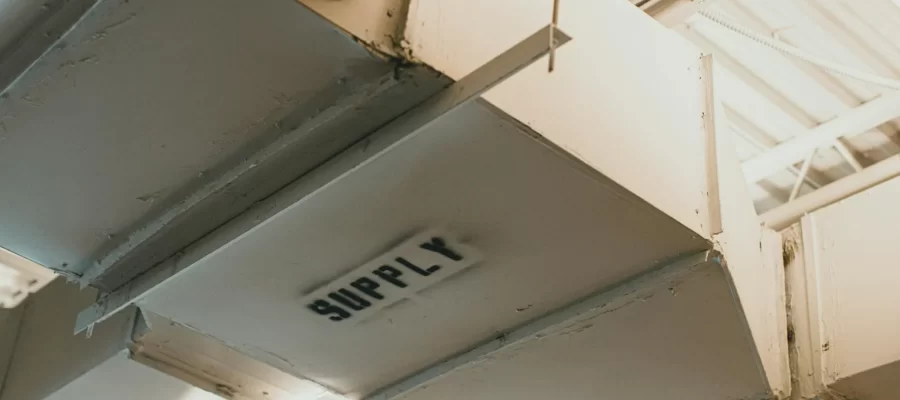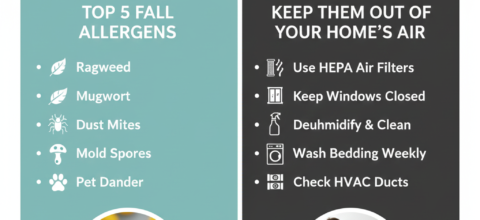Mold in Ducts? Here’s How to Get Rid of It
Nobody expects to find mold in ducts, yet it happens more often than most people think. You go about your day, everything seems fine—until that weird musty smell starts creeping in. Then maybe someone starts sneezing more than usual. Or you notice blotchy patches around the vents. That’s when the realization sets in: something’s growing in there, and it’s probably not good.
Why Mold Even Shows Up Inside Air Systems
You’d think something hidden behind walls and blowing cold air wouldn’t have much going on, but air systems can create the perfect little habitat for unwanted growth. They trap moisture, collect dust, and stay dark—a trifecta for any microbe looking to settle down. If your home is humid or you’ve had water issues, that environment becomes even more inviting.
The Early Clues You Might Be Dealing with Mold
At first, it’s easy to write off what you’re seeing or smelling. Maybe the house just needs a deeper clean. But when the same stuff keeps reappearing—especially near air outlets—it might be more than dust. That stale, earthy smell? Classic sign. Frequent headaches, sinus problems, or itchy eyes that magically improve when you’re away from home? Also worth paying attention to. Mold likes to stay hidden, but it’s not subtle once it’s been there a while.
Moldy Air Vents Aren’t Just Ugly—They’re a Warning
Seeing dark spots around your air vents might seem like just another cleanup task. But if you’ve wiped them off and they come back, or you’re noticing that smell no matter what you do, you’re probably dealing with moldy air vents, not just a dusty system. That difference matters, because treating it as a regular mess won’t stop it from spreading.
Health Effects: More Than Just an Annoyance
Not everyone reacts the same way to this kind of exposure. Some people barely notice it. Others get hit with non stop sinus issues, dry coughing, or brain fog they can’t explain. And if anyone in the house has asthma or allergies, they’re likely to be the first ones affected. Mold in air ducts doesn’t stay in one place—it spreads through the airflow and ends up in the very air you breathe.
What About Black Mold in Air Vents?
The term “black mold” gets thrown around a lot, but for good reason. Some strains, like Stachybotrys, can be more than just irritating—they can actually be harmful. If you see dark patches near air openings and people in your home are getting sick more often, there’s a chance you’re dealing with black mold in air vents, which is worth addressing immediately. The longer it sits, the more stubborn—and dangerous—it becomes.
Why It Spreads So Fast
Give it two days. That’s all mold needs to take hold if conditions are right. In some homes, especially ones with poor ventilation or high humidity, growth can go from invisible to widespread almost overnight. And once it’s inside the system, every time the air kicks on, those tiny spores get a free ride through every room.
What Not to Do (Even If It’s Tempting)
It’s natural to want to grab bleach and scrub it away. Problem is, that doesn’t reach where the real trouble hides. It’s also risky—disturbing a mold colony without proper tools can send particles deeper into the system. If you only clean what you can see, it’ll be back before you know it. Strong smells or chemical sprays might cover things up for a bit, but they’re not a fix.
So… What Does Work?
When professionals tackle mold in ducts, they don’t guess—they inspect everything. That includes the inside of the system, hard-to-reach spaces, and anything that could be holding moisture. Then comes the deep clean, using HEPA vacuums, targeted antimicrobial treatments, and sometimes UV-C technology. If any insulation or filters are compromised, they’re replaced. It’s not just about removing mold—it’s about resetting the entire system.
A Word on UV Lights
Some homeowners go one step further and have UV lights installed inside the system. These lights work silently in the background, breaking down bacteria, spores, and other particles before they get into the air. While they’re not essential for everyone, in areas with high humidity or past issues, they can make a noticeable difference in long-term air quality.
Keeping Mold Away for Good
After a proper cleaning, the goal is to stop the problem from coming back. Moisture control is key here. That might mean using a dehumidifier, fixing small leaks, or just checking in on how your air system is draining. Filters should be changed on schedule (not “when you remember”) and it doesn’t hurt to peek at your vents every so often to catch any changes early.
Should You Call Someone? Probably, If…
If you’re noticing a persistent odor, seeing dark streaks near your ceiling vents, or having unexplained allergy-like symptoms at home, it’s time to bring in someone who knows what they’re doing. This isn’t the kind of thing you want to put off. Left unchecked, mold won’t just linger—it’ll spread, and that means bigger costs down the road.
How Long Will It Take to Get Rid Of?
You’re looking at a few hours, give or take. Larger homes or complicated setups might take a bit longer, but it’s usually a same-day job. Some teams come back for a follow-up, especially if the contamination was bad, just to confirm everything’s under control. The good news is, once it’s done right, it stays gone—if you take care of the system afterward.
Mold in Ducts: Final Thoughts
There’s something about knowing the air in your home is clean that changes how you feel. Less sneezing. Better sleep. No more mystery smells. If you’ve been dealing with a musty funk you can’t seem to shake, or family members are constantly stuffy, it’s worth taking a closer look. Getting rid of mold in your ducts isn’t just a chore—it’s a reset button for your home’s comfort.
Quick FAQ
Can I clean it myself?
Not really. You can wipe the surface, but if there’s anything growing inside the system, you’re only scratching the surface.
Is all mold dangerous?
Not all of it, but even mild strains can trigger allergies or make people feel off. Either way, it doesn’t belong in your air system.
How do I stop it from coming back?
Control humidity, use good filters, schedule regular air duct cleaning, and stay on top of maintenance. That’s the best defense.
What if I rent my place?
Let your landlord know immediately. In many cases, they’re responsible for fixing it—especially if it affects health or habitability.










